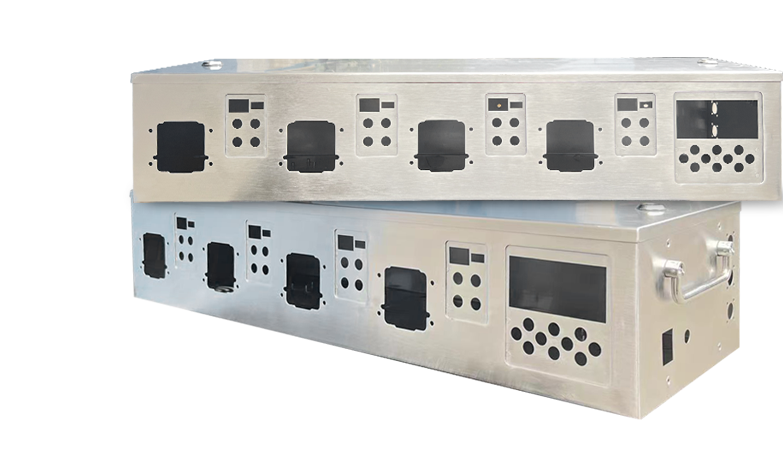Modern sheet metal process Modern sheet metal process includes: filament power winding, laser cutting, heavy processing, metal bonding, metal drawing, plasma cutting, fine welding, roll forming, metal plate bending forming, die forging, water radiation cutting, fine welding, etc. Parts with constant thickness during machining Correspondingly, casting parts, forging parts, machining parts, etc. For example, the iron shell outside the car is a sheet metal part, and some kitchen utensils made of stainless steel are also sheet metal parts. Changzhou Sheet Metal Processing Factory
Blanking: refers to the process of obtaining the product shape by using a die on an ordinary punch or other equipment.
Punching: refers to the process in which the workpiece is processed by an ordinary punch and die.
Punching bump: refers to the process of forming a convex shape of the workpiece with a die on a punch or hydraulic press.
Punching and tearing: also known as "punching bridge", it refers to the process of forming a bridge like shape of the workpiece with a die on a punch or hydraulic press.
Hole drawing: also called "flanging", it refers to the process of turning up the round hole edge of the workpiece by using a die on an ordinary punch or other equipment. Process.
Tapping: refers to the process of machining internal threads on the workpiece.
Leveling: refers to the process of using other equipment to level the workpiece when it is not smooth before and after processing.
Tooth return: refers to the process of stopping the second screw thread repair for the workpiece with pre tapped teeth.
Drilling: refers to the process of using a drill to stop drilling the workpiece on a drilling or milling machine.
Chamfering: refers to the process of stopping processing sharp corners of workpieces with molds, files, grinders, etc.
Stamping: refers to the process of stamping words, symbols or other marks on the workpiece with a die.
Counterbore: refers to the technological process of machining tapered holes on the workpiece to fit the connectors like countersunk screws.
Flattening: refers to the process of transition from a workpiece with a certain shape to a flat workpiece.
Punching mesh hole: refers to the mesh hole punched on the workpiece with a die on an ordinary punch or CNC punch.
Reaming: refers to the process of turning small holes on the workpiece into large holes with a drill or milling cutter.

We have strict quality control processes, testing equipment and means, and full-time quality control departments and posts.